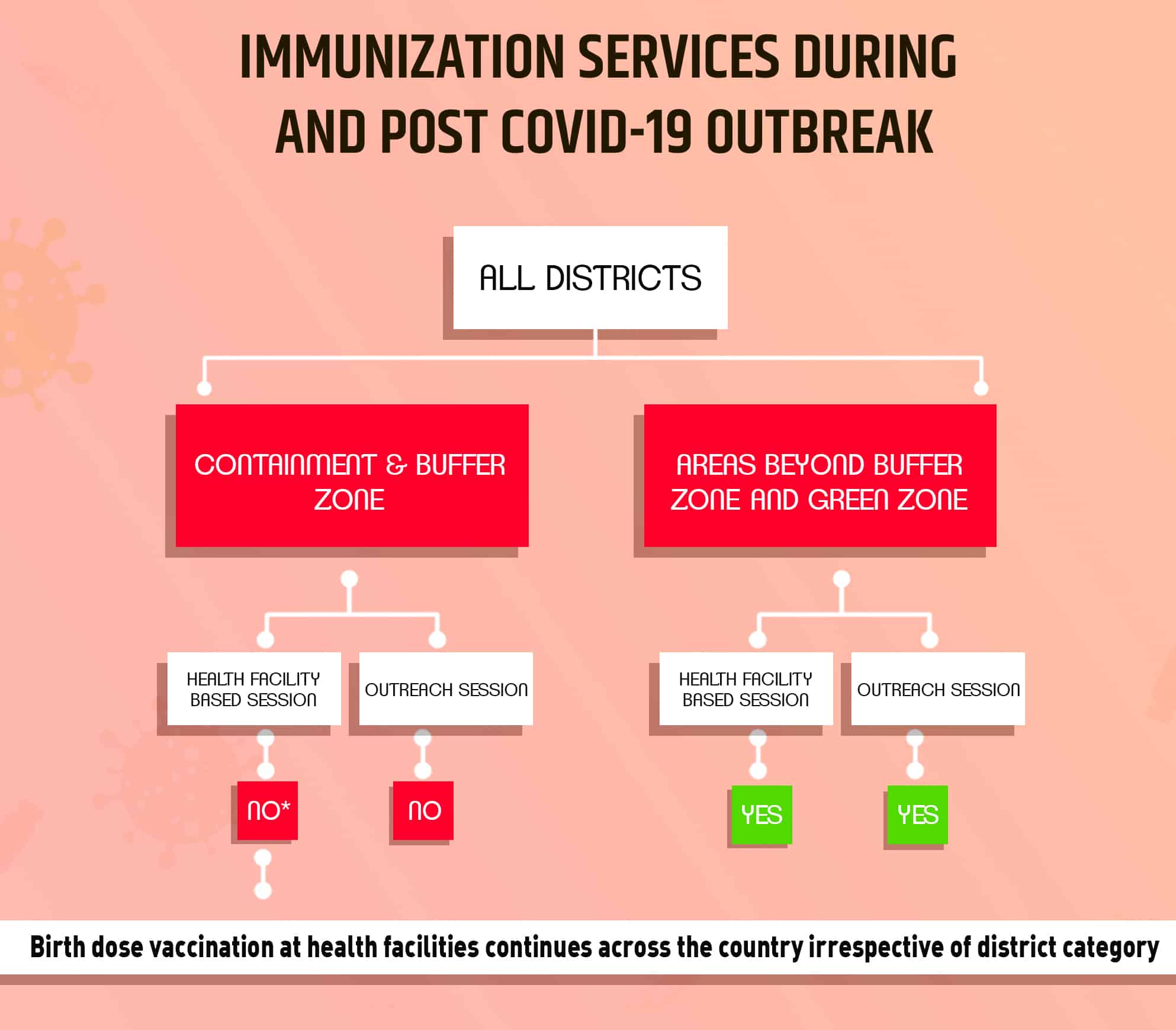Strengthening India’s Routine Immunization Services during and beyond COVID-19
August 13th, 2020 | story
On March 24, 2020, India’s Prime Minister Narendra Modi declared a 21-day national lockdown to deter people from stepping outside their homes to curtail the transmission of COVID-19. As economic and health services decelerated, there was uncertainty about the nationwide necessity of this seemingly Draconian measure. However, as a country of 1.35 billion, rigorous steps were imperative to protect people from the pandemic.
On June 8, India began a phased reopening of its economy. Currently, the country is focusing on reviving the economy while also tackling an increasing caseload of COVID-19. As of August 12, 35 states/union territories had reported more than 2.33 million active COVID-19 cases, the second half of which occurred in just three weeks. As of posting, more than 46,000 people have died from the disease, a case fatality rate (CFR) of 2.06%. A day-to-day tally of cases can be viewed on the official website of the Ministry of Health and Family Welfare (MOHFW) on www.mohfw.gov.in. Despite being the third-most affected country in the world, India’s CFR is below the global average (3.75%).
The COVID-19 pandemic has transformed the world order. Every industry and sector—health in particular—has suffered. Primary health care services, including immunization, have been disrupted, putting women and children at risk for vaccine-preventable diseases, such as measles, rotavirus, and tetanus.
India’s Universal Immunization Program is one of the largest in the world, reaching 26.5 million infants and 29 million pregnant women each year. In April 2020, however, the health management and information system data reported a decrease in the number of routine immunization (RI) sessions relative to the previous year. The number of fully immunized children also decreased over the same time period.
Given this decline, in April the MOHFW and the Government of India (GOI) issued guidelines declaring immunization an essential health service and instructing states to resume it. All districts with active COVID-19 cases were categorized into red or orange zones, or as a green zone if no active cases. However, zone categorization changed weekly, making RI strategizing difficult. After the MOHFW simplified the area categorization and released guidance (see figure below), RI services began to resume.

To support the MOHFW’s efforts, the Immunization Technical Support Unit took on the task of supporting the strengthening and resuming of RI services across the country. With 35 states and union territories, it was imperative to develop context-specific plans that would meet the needs of each. States and union territories were divided into six zones, with one medical officer to oversee the resumption of RI services assigned to each.
Weekly state health reports determined that from the time the lockdown began, many states stopped reporting on the coverage of RI services. The need to ensure regular availability of data from each state health system was recognized and conveyed to state health authorities. The GOI’s first priority was to determine how many children had been covered and missed since March 23, the day before lockdown, and how quickly each state could resume services.
As the economy began to reopen in June, accurate, timely, and continuous data reporting was the only way to gain insight into where immunization sessions had resumed, and where bottlenecks for resumption of services persisted.
Despite arduous efforts from states to resume RI services, the pandemic triggered in people a fear of going out for vaccinations. It was critical to convey messages that RI services would adhere to the highest standards of safety and hygiene to protect beneficiaries from COVID-19.
Each medical officer connects weekly with the state immunization officers and other stakeholders, including the WHO, UNICEF, UNDP, and CHAI, to discuss challenges and develop solutions as states restart immunization services. Furthermore, identifying, documenting, and disseminating challenges, best practices, and results related to vaccine shortages, transportation, special immunization sessions, use of staggered approaches, etc. is critical for cross-learning across states.
India has resumed RI activities following GOI area categorization. All sessions—outreach and fixed—are being held in accordance with the guidelines. States have undertaken initiatives to cover missed children through additional sessions; increased social mobilization activities to alleviate the fear and stigma; and strengthened review mechanisms to identify bottlenecks and support the program. The MOHFW is ensuring an adequate and consistent supply of vaccine and logistics. The current major challenge is the dynamic status of the containment and non-containment zones, resulting in a need to constantly re-develop strategies based on the local COVID-19 situation.
The Immunization Technical Support, funded by the Bill & Melinda Gates Foundation, is anchoring support at the national and state levels during COVID-19 to ensure RI services operate as seamlessly as possible during these unprecedented times.
We strive to build lasting relationships to produce better health outcomes for all.